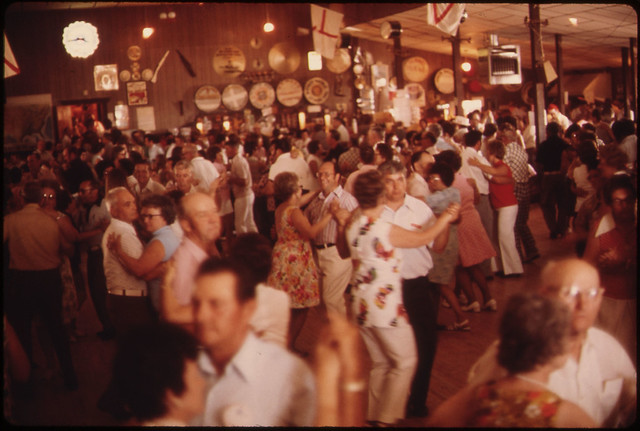 |
| internet source: polka dancing |
The polka originated as a Czech peasant dance. The hop, step, close, step of the polka can be found in English country dances and in German and Polish folk dances. The Czech word polka for half step refers to the quick shift of weight from one foot to the other. Polka dancing soon evolved into a vivacious couple dance in the early 19th Century. It was refined and introduced to the ballrooms of Prague in 1835, then to the ballrooms in Paris in 1840. During this time frame, dancing was considered important for the socially prominent. The attraction of the polka to men and women resulted in what was called polkamania. In both England and the US, the waltz and polka became the dances to do, gradually replacing the contredance and cotillion by the middle of the 19th century. The polka brought with it other popular dances, such as the gallop, or galoppade. It consisted of a series of rapid chasse around the room with an occasional turn. It was a favourite final dance of the evening that was done to fast polka music.
 |
| internet source: polka dancing |
With the introduction of ragtime, jazz and newer dances of the early 20th century, the polka declined a bit. However, after WWII, the polka was adopted by Polish immigrants to the US as their national dance in 1945. Additional enthusiasm for the polka came from other Americans, who followed Lawrence Welk (a famous band leader with his popular dance music on TV) and other postwar bands. Polka music is happy and robust. A variety of styles of the polka exist, from a light, springy quality reflecting its Polish roots to a heavy and forceful quality reflecting its German roots. Country-western dancers eliminate the hop and use more of a shuffle on the triple steps and add a lift that makes the polka enjoyable to do both for fun and in competitions.
Polka uses 2/4 timing, dancers need to repeat the rhythmic pattern on both sides so there are a total of four counts before your starting foot is free again. Thus practically, many count it 4 and treat it a 4/4 time. The major feature is a hop combined with a triple step, cued hop, step, ball, step, count as &1 &2.
Notice that one foot is always in front of the other foot during the triple step, which is also called keeping one foot in the lead. Keep your CPB over your working foot.
Learn more about the other dance styles? Check
here.
...................................................
